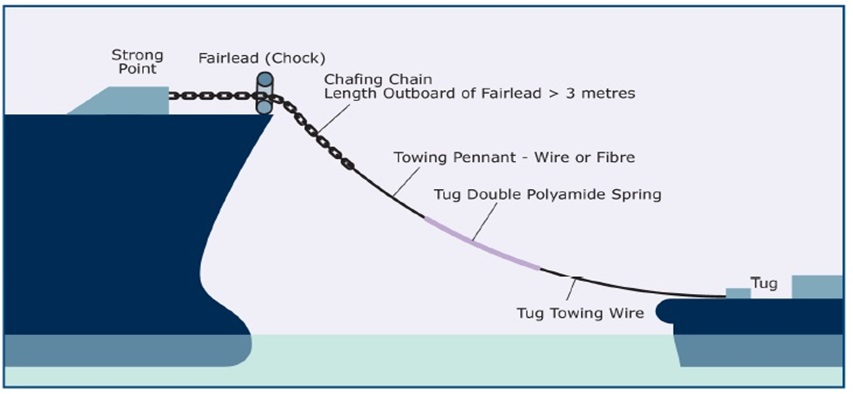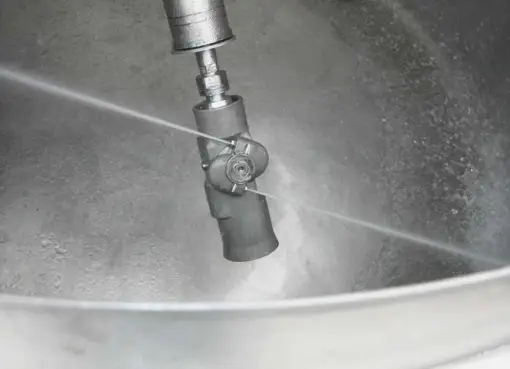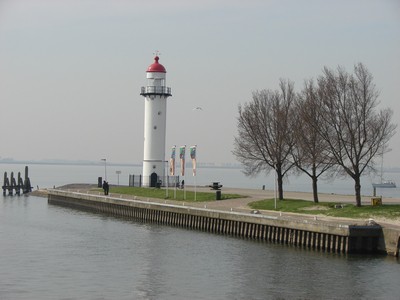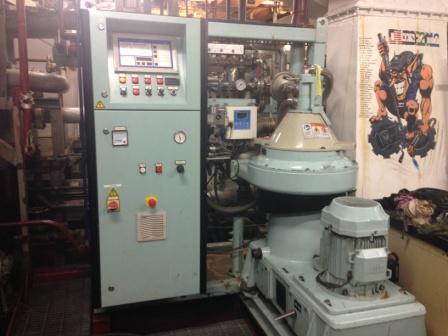The regulations for Emergency Towing Arrangement are as per SOLAS Chapter II-1, Regulation 3.4. amended by MSC 256(84) on 01/JAN/2012
Emergency Towing Arrangement is compulsory for all tankers of 20,000 DWT and above
- It should be provided at both the forward and aft end of adequate strength taking into account the size & DWT of the ship.
- Emergency Towing Arrangements should be able to work without any power supply and should be accessible to the towing ship without needing to come too close.
- It should be ready for rapid deployment and at least one of the two should be pre-rigged.
- Should be of sufficient strength, taking into account all the forces acting upon it.
- The strength of the towing components should be as follows:
- At least 1000 kN for tankers of 20,000-50,000 DWT.
- At least 2000 kN for tankers of 50,000 DWT and above.
- Sufficient strength at all towing angles from Centreline to 90° (Port & Stbd) and 30° vertically.
- The length of the towing pennant should be at least twice the lightest seagoing ballast freeboard at the fairlead + 50 mtrs.
- Fairlead should be broad enough to allow the passing of the largest portion of the chafing gear, towline.
- If a chafing chain is used, it should extend from the strong point to at least 3 meters beyond the fairlead to ensure that the towing pennant remains out of the fairlead during the operation.
- The arrangement should be there for safe and effective use in darkness. This is achieved by installing small bulbs on the float line and buoy.
- Design & construction should be approved by the administration.
Deployment Time:
- AFT: Pre-rigged and capable of being deployed in a controlled manner in a harbour condition is not more than 15 minutes by one crew.
- FWD: Should be capable of being deployed in harbour conditions in not more than 60 minutes by all crew members.
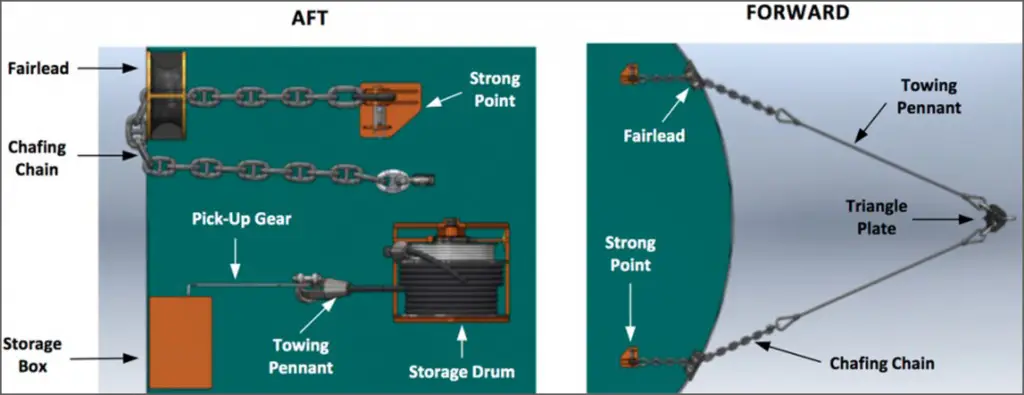
Image Credit: mepsystems.com.sg
Emergency Towing Booklet:
The ship shall be provided with ship-specific ETP. The emergency towing procedure shall include a drawing of the fwd and aft deck showing ETA, inventory of equipment onboard used for emergency towing, means & method of communication & sample procedures.
1. Ship-specific data to be included:
- Ships Name
- Call sign
- IMO No.
- Anchor detail
- Cable & Chain detail
- Height of mooring deck
- Draft & displacement range
2. Assembly & Rigging Diagram
3. Location of strong point
4.Equipment & strong point capacity & SWL.
5. Organization of crew & task
I hope you like the information. Please let us know in the comments section. we love to hear from you.

